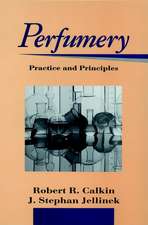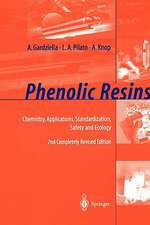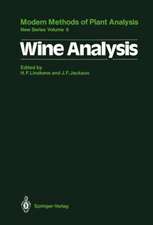Superfine Particle Technology
Autor Noboru Ichinose Traducere de M. James Autor Yoshiharu Ozaki, Seiichiro Kashuen Limba Engleză Paperback – 20 noi 2011
Preț: 384.70 lei
Nou
Puncte Express: 577
Preț estimativ în valută:
73.61€ • 77.05$ • 61.27£
73.61€ • 77.05$ • 61.27£
Carte tipărită la comandă
Livrare economică 31 martie-14 aprilie
Preluare comenzi: 021 569.72.76
Specificații
ISBN-13: 9781447118107
ISBN-10: 1447118103
Pagini: 236
Ilustrații: IX, 223 p.
Dimensiuni: 155 x 235 x 12 mm
Greutate: 0.34 kg
Ediția:Softcover reprint of the original 1st ed. 1992
Editura: SPRINGER LONDON
Colecția Springer
Locul publicării:London, United Kingdom
ISBN-10: 1447118103
Pagini: 236
Ilustrații: IX, 223 p.
Dimensiuni: 155 x 235 x 12 mm
Greutate: 0.34 kg
Ediția:Softcover reprint of the original 1st ed. 1992
Editura: SPRINGER LONDON
Colecția Springer
Locul publicării:London, United Kingdom
Public țintă
ResearchCuprins
1 Fundamentals of Superfine Particles.- 1.1 Introduction.- 1.2 Properties of Superfine Particles.- 1.3 Volume Effect in Superfine Particles.- 1.4 Surface Effect in Superfine Particles.- 1.5 Interaction Between Superfine Particles.- 2 Physics of Superfine Particles.- 2.1 Introduction.- 2.2 Structure and Form.- 2.3 Properties.- 3 Chemistry of Superfine Particles.- 3.1 Introduction.- 3.2 Adsorption.- 3.3 Particle Dispersion.- 3.4 Particle Flocculation.- 3.5 Rheology.- 3.6 Gels.- 4 Physical Manufacturing Processes.- 4.1 Introduction.- 4.2 Milling Method.- 4.3 Build-up Method.- 4.4 Outlook for Further Technological Developments in the Production of Superfine Particles.- 4.5 Handling of Superfine Particles.- 5 Chemical Manufacturing Processes.- 5.1 Introduction.- 5.2 Precipitation.- 5.3 Hydrolysis.- 5.4 Atomization.- 5.5 Oxidation-Reduction Method.- 5.6 Freeze Drying.- 5.7 Laser Synthesis.- 5.8 Spark Discharge.- 6 Applications of Superfine Particles.- 6.1 Introduction.- 6.2 Use of Superfine Particles in Electronic Materials.- 6.3 Use of Superfine Particles in Magnetic Materials.- 6.4 Use of Superfine Particles in Optical Materials.- 6.5 Use of Superfine Particles in High Strength, High Toughness Materials.- 6.6 Use of Superfine Particles in Catalyst Materials.- 6.7 Use of Superfine Particles in Sensor Materials.
















